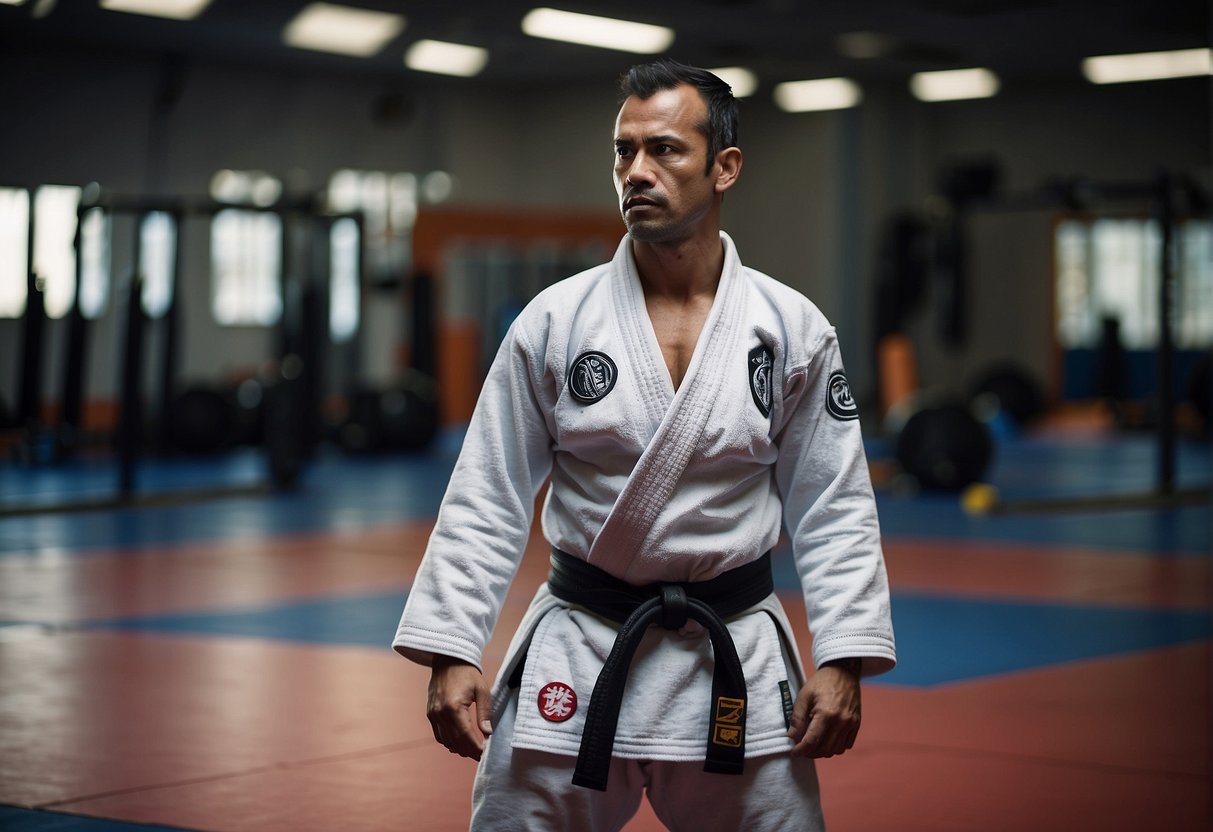📦 FREE Shipping
How Many Calories Does BJJ Burn in 2024? Surprising Insights

Brazilian Jiu-Jitsu is more than just a martial art—it’s a rigorous workout that can significantly impact your fitness. “How Many Calories Does BJJ Burn? Surprising Insights” grapples with the intense calorie burn of this ground-fighting discipline.
How Many Calories Does BJJ Burn?
Striking the right balance: Variables such as sex, age, weight, height, and even body fat percentage play critical roles in determining the exact energy expenditure during your sessions. Due to these factors, an average person might see a significant variance in calories burned in comparison to their training partners.
BJJ Training Intensity:
- Warm-ups and Drills: Expect to shed about 500-700 calories per hour.
- Sparring (Light): Engaging in lighter rolls can burn approximately 3 calories per pound of body weight per hour.
- High-Intensity Training: Ramp up to competition-level intensity, and you could expend a staggering 800-1000+ calories per hour.
Your BJJ Caloric Burn: Use a calorie calculator to get a tailored estimate, which takes into account your gender, age, and other personal metrics, giving you a clear vision of your workout’s effectiveness.
Quick BJJ Calorie Facts:
- A person weighing 178 lbs may burn around 410 calories in 30 minutes.
- BJJ can be as effective as HIIT for burning calories.
Factors Influencing Energy Expenditure in BJJ

Intensity and Training Duration
Intensity: The intensity of your training will increase your calorie burn. A high-intensity sparring session demands more energy, maximizing calorie expenditure.
- High intensity: Quick, explosive moves and constant transitions
- Moderate intensity: Steady-paced rolling with fewer breaks
Duration: The length of your training directly correlates with the total calories burned. Longer sessions mean more time to burn energy.
- Short duration: Less than 30 minutes, suitable for focused technique work
- Long duration: Typically 1-2 hours, often seen in extended classes or open mats
Techniques and Drilling Sessions
Techniques: The complexity of BJJ techniques means some maneuvers can engage more muscle groups, increasing the demand on your body.
- Complex techniques: Involve greater muscle activation (ex: transitions from the bottom position, submissions from the guard)
- Simple techniques: Generally require less energy (ex: basic guard passes)
Drilling: Repeated practice of techniques (drilling) enhances muscle memory and can increase your endurance over time.
- High-repetition drilling: Boosts cardio and muscular strength
- Technical drilling: Focuses more on precision, less on cardio
Athlete’s Physical Attributes
Composition: Your body composition – the ratio of muscle mass to fat – affects how many calories you burn. Muscle burns more calories at rest than fat.
- Muscle mass: Athletes with more muscle mass typically have a higher resting metabolic rate.
Physical attributes: Age, strength, and fitness levels all play a role in energy expenditure.
- VO2 max: A higher VO2 max indicates better cardiovascular endurance, affecting your ability to sustain longer, more intense sessions.
Gear and Clothing
Gi vs. No-Gi: The traditional Gi can add weight and resistance, potentially upping the calorie burn.
- With Gi: The fabric adds friction, making techniques physically more demanding.
- No-Gi: Less resistance from clothing, often resulting in faster-paced rolling which can be comparable in calories burned.
Clothing: What you wear during training can subtly affect how hard your body works.
- Heavier clothes: May cause you to sweat more and require more effort in movement.
- Lightweight gear: Often preferred for high-intensity or prolonged sessions to keep the body cooler.
Enhancing Weight Loss and Fitness Through BJJ

Caloric Burn and Weight Management
BJJ is a dynamic way to burn calories and manage your weight. The high-intensity nature of BJJ sparring sessions means you can expect to incinerate between 500 to 700 calories per hour during moderate practice, with numbers skyrocketing up to 800 to 1000+ calories for intense sessions. This martial art requires constant movement and engagement, driving your heart rate up and creating a furnace for calorie expenditure which is key for weight loss.
- Typical 1-hour BJJ Class Calorie Burn: 500 – 700 calories
- High-Intensity 1-hour BJJ Class Calorie Burn: 800 – 1000+ calories
Complementary Exercises and Diet
Blending specific exercises and dietary adjustments into your routine is crucial to maximizing your weight loss and refining your BJJ skills.
Complementary Exercises:
- Cardiovascular endurance can be built through running, swimming, or cycling.
- Call upon the strength-building benefits of calisthenics and boxing to further your muscle development.
- Incorporate high-intensity interval training (HIIT) activities, like basketball or soccer, to improve agility and explosiveness.
Balanced Diet:
- Ensure a healthy diet rich in protein to aid muscle repair.
- Maintain a moderate intake of carbohydrates to fuel your intensive training sessions.
- Adjust your calorie intake according to your weight loss goals, ensuring it complements your BJJ training.
FAQ:
Does BJJ burn a lot of calories?
Yes, BJJ burns a lot of calories, with estimates suggesting around 500-1,000 calories per hour depending on the intensity.
Does BJJ burn fat?
BJJ can burn fat effectively as it’s a high-intensity martial art that combines cardiovascular exercise with strength training.
How many calories do you burn in Japanese jiu jitsu?
In Japanese jiu-jitsu, calorie burn can vary, but you might burn approximately 400-600 calories per hour.
How many calories does 1 hour of MMA burn?
One hour of MMA can burn a significant amount of calories, often between 500 and 800 calories, depending on the intensity of the session.
If this article about the question: “How Many Calories Does BJJ Burn” helped you, don’t forget to leave us a comment down below about what you think of the article.


